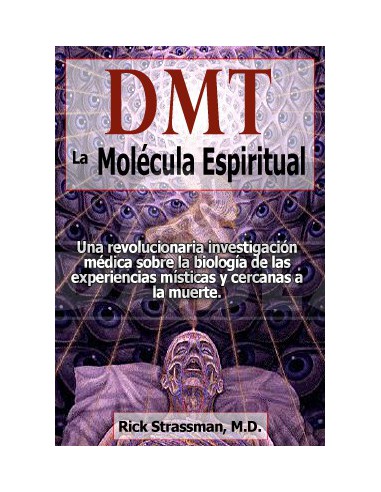DMT: la Molécula del Espíritu
Rich Strassman is one of the few people who received permission to do research with psychedelics during the 1990s, in the turbulent 20th century.And he got a permit, nothing more and nothing less, to study the potent and controversial DMT (dimethyltryptamine), a substance that around the 1930s was synthesized in a laboratory...
...and which later, during the 1950s, was identified in numerous plants around the world.
One of these plants is Psychotria viridis, one of the plants that serves as an ingredient for ayahuasca . In fact, as established by Dennis McKenna, the psychoactive or visionary effects of this Amazonian shamanic drink are due to DMT, a component that, although inactive when ingested orally, becomes inactive when combined with other plants. This is because the human digestive system rapidly degrades DMT, but when monoamine oxidase inhibitors (MAOIs, such as harmala and harmaline, present in Banisteriopsis caapi) are also ingested , this metabolism is blocked, allowing DMT to remain active in the human body for a few hours .
But DMT has not only been found in various plants, its presence has also been detected in mammals. Among them, the human being. And hence its possible relationship with the world of dreams has been proposed (by the biochemist Jace Callaway, for example). Rick Strassman goes a little further and raises in this book the possible relationship of DMT with the powerful and shocking near-death experiences, or other types of visionary experiences that can occur, apparently, spontaneously.
In fact, DMT is one of the substances that provide a more intense visionary experience - at least, if it is administered intravenously or inhaled, to circumvent the degradation process that begins in the digestive system, and which is attenuated by the presence of the MAOIs. This intensity in its effects, as well as the localization of DMT production in humans in the pineal gland, was what led Strassman to suggest this possible relationship of DMT with the extraordinary, intense and spiritual events that can happen to people approaching death - it is as if the human organism, in this exceptional situation, reacted by producing an increase in the production of this spiritual molecule.
But beyond this interesting and extreme hypothesis, Dr. Strassman also investigated in his essays the possible use of DMT as an assistant to psychotherapy processes, in processes of self-knowledge as well as research in general on the mind or the human soul.
From 1990 to 1995, Dr. Rick Strassman conducted clinical studies at the University of New Mexico, approved and funded by the U.S. government, in which he injected 60 volunteers with dimethyltryptamine (DMT), one of the most potent psychedelics known. His detailed account of these sessions is a most interesting inquiry into the nature of the human mind and the therapeutic potential of psychedelics. DMT, a plant-derived chemical found in ayahuasca, an Amazonian psychedelic tea, is also produced by the human brain. This substance, released naturally by the pineal gland, facilitates the soul's entry into and exit from the body and is an integral part of birth and death experiences, as well as higher states of meditation and even sexual transcendence. If used wisely, DMT could usher in a period of extraordinary progress in the scientific exploration of the more mystical regions of the human mind and soul.
Dr. Rick Strassman is a Clinical Associate Professor of Psychiatry at the University of New Mexico School of Medicine.


